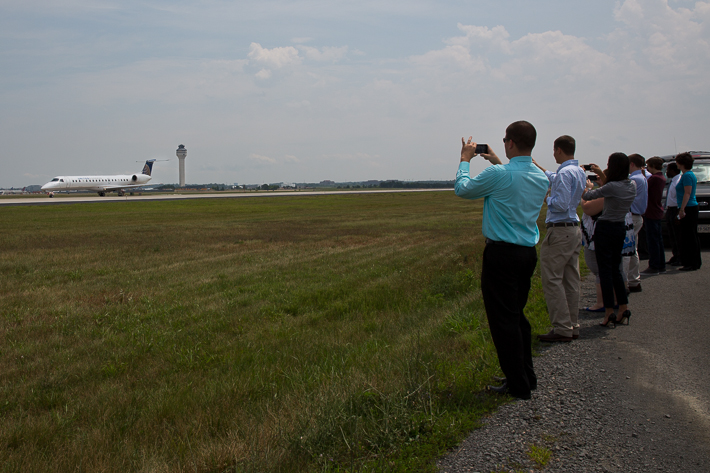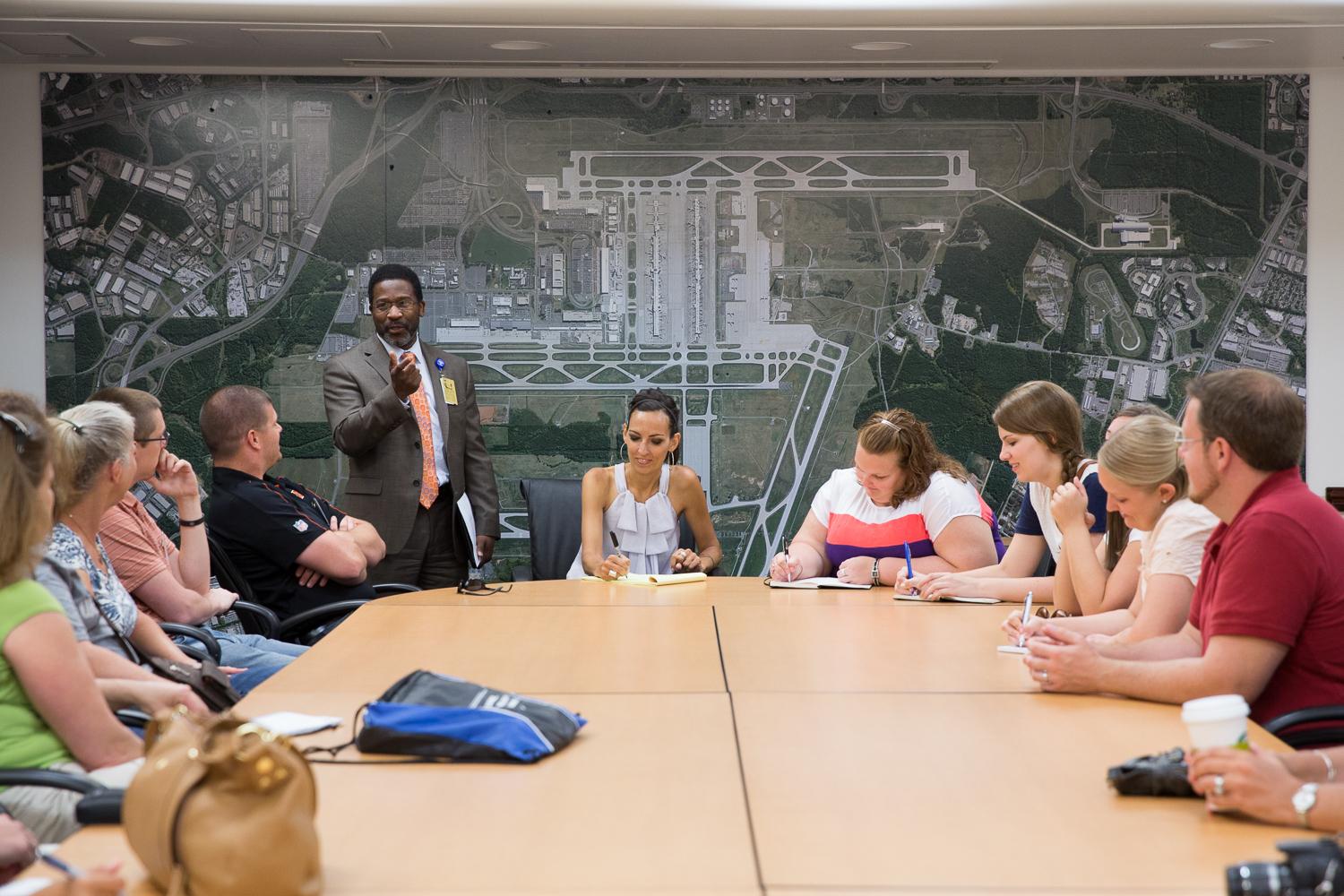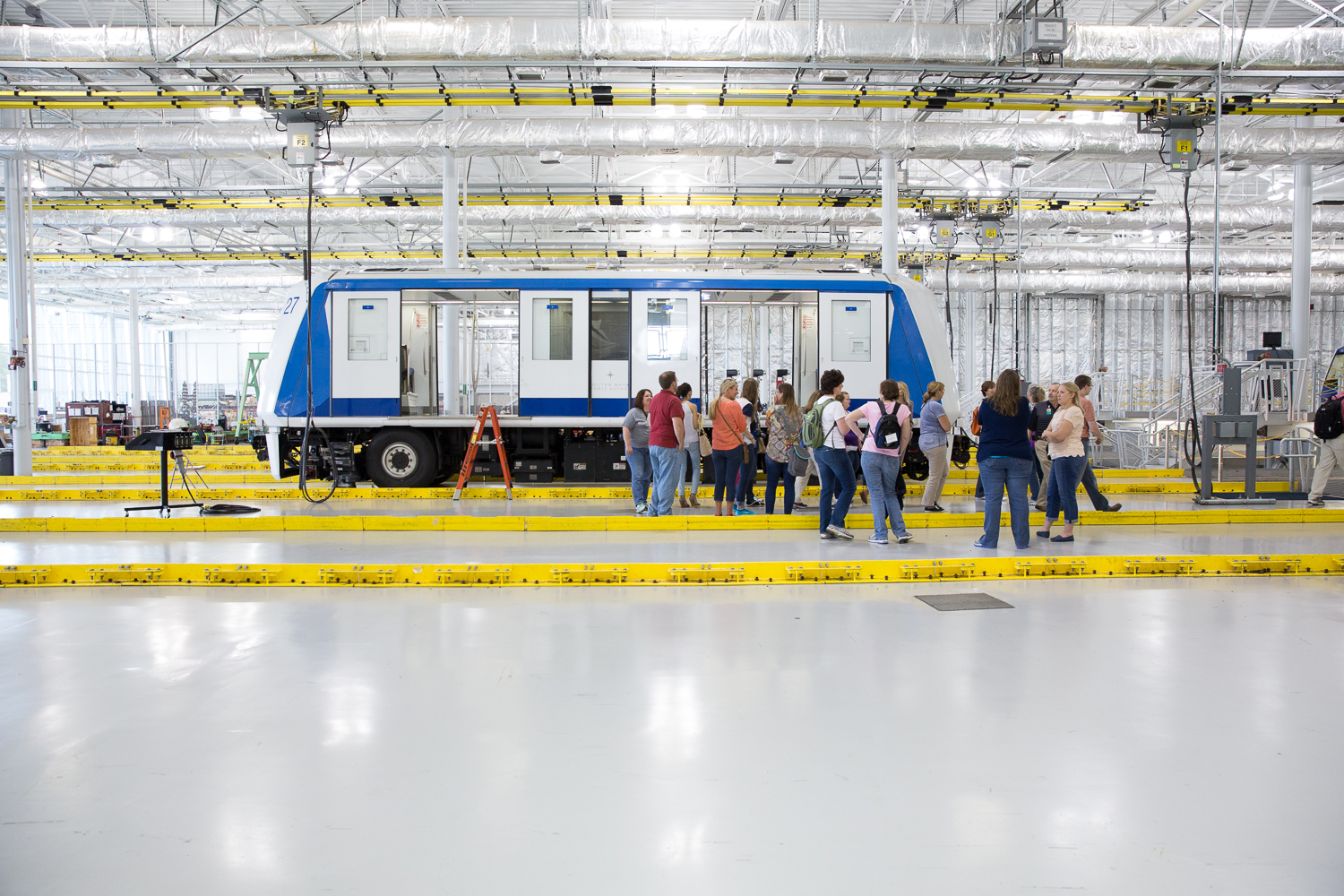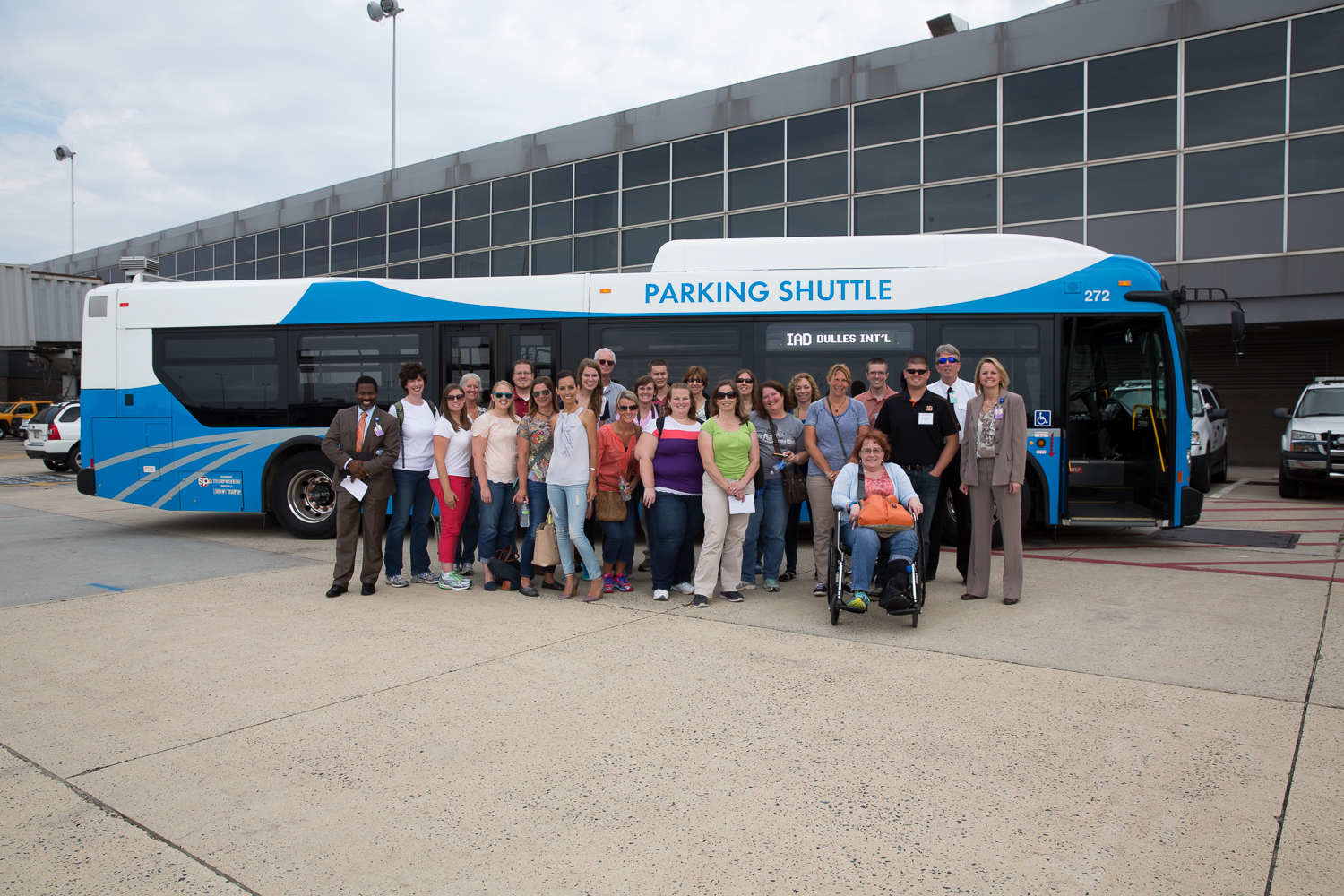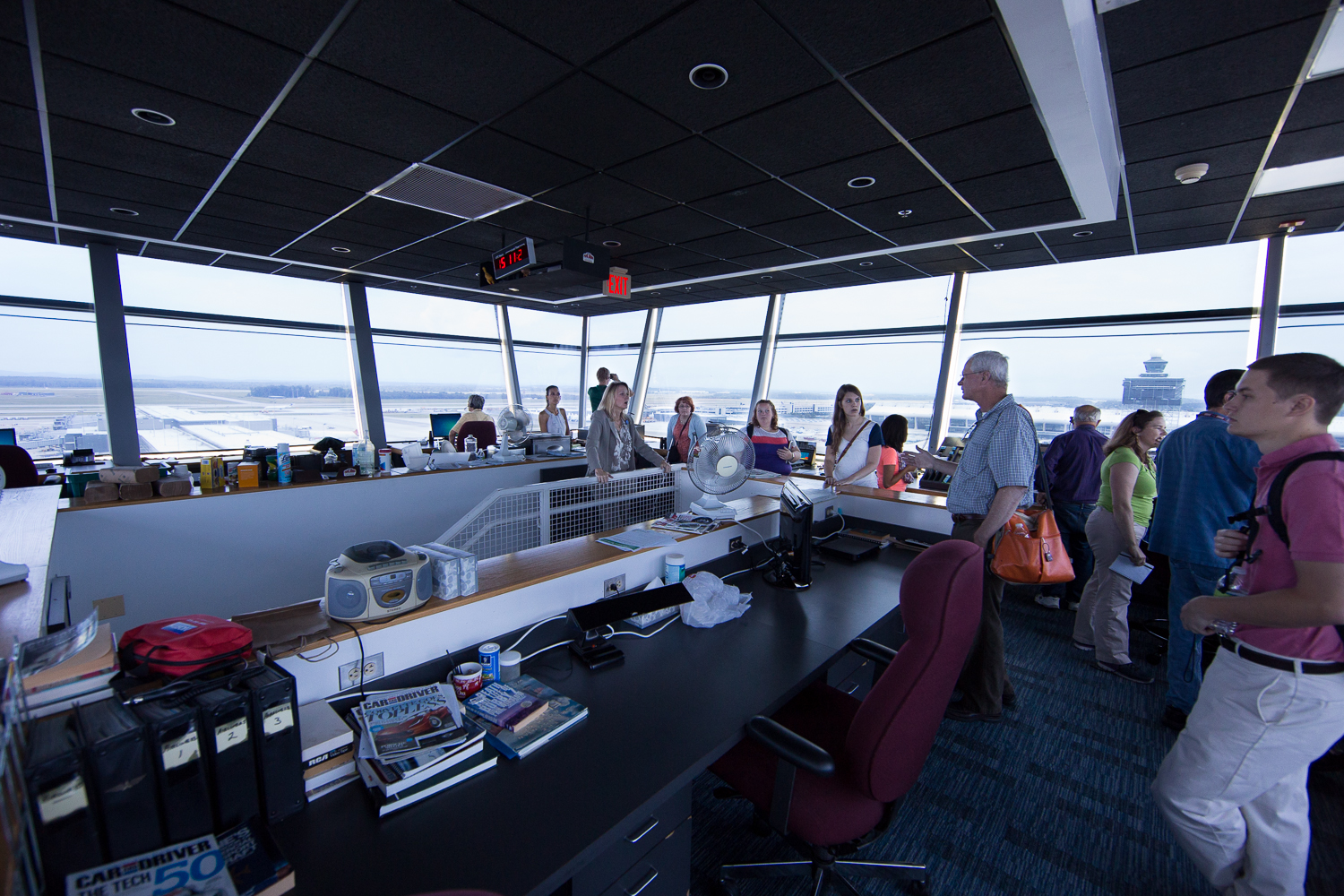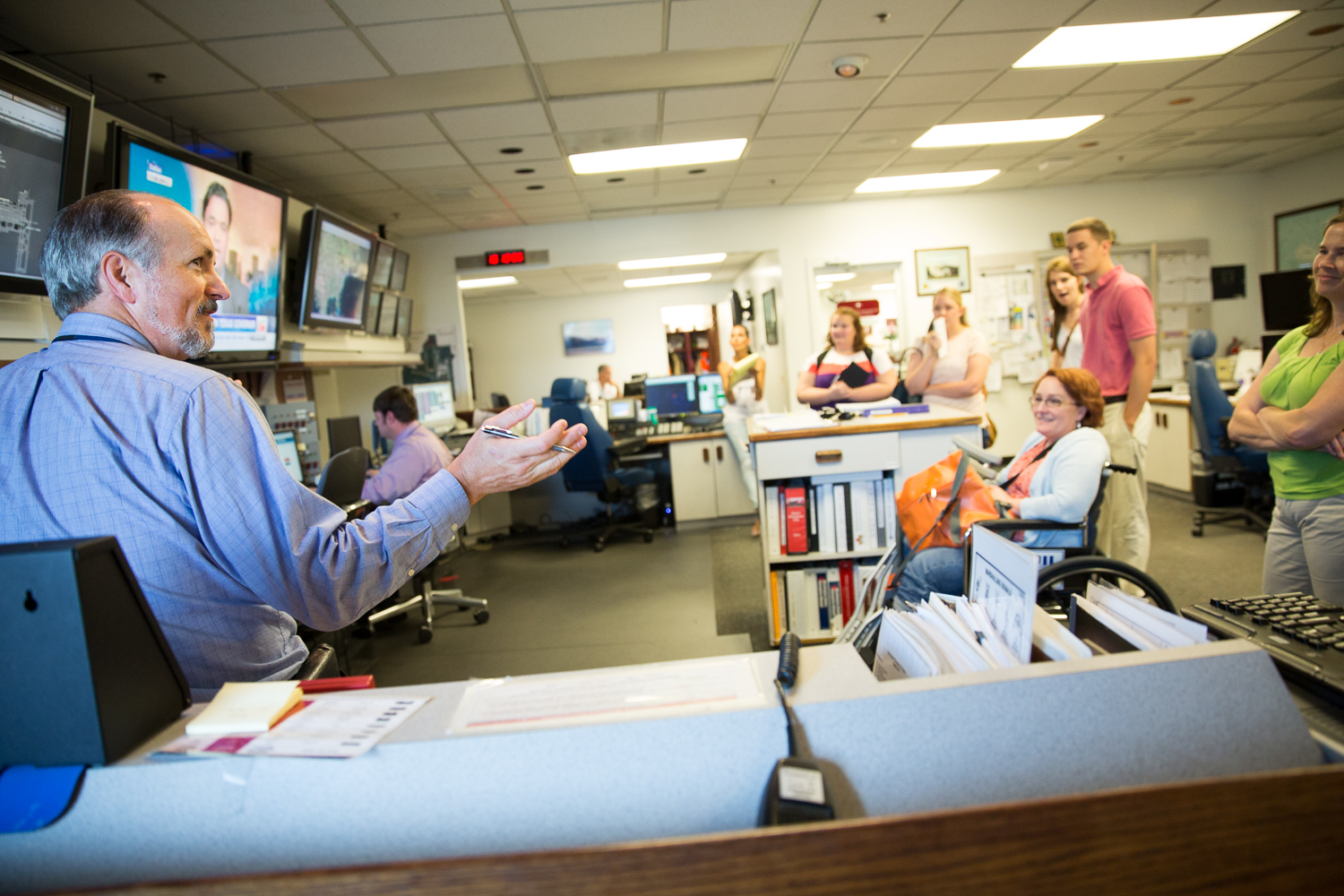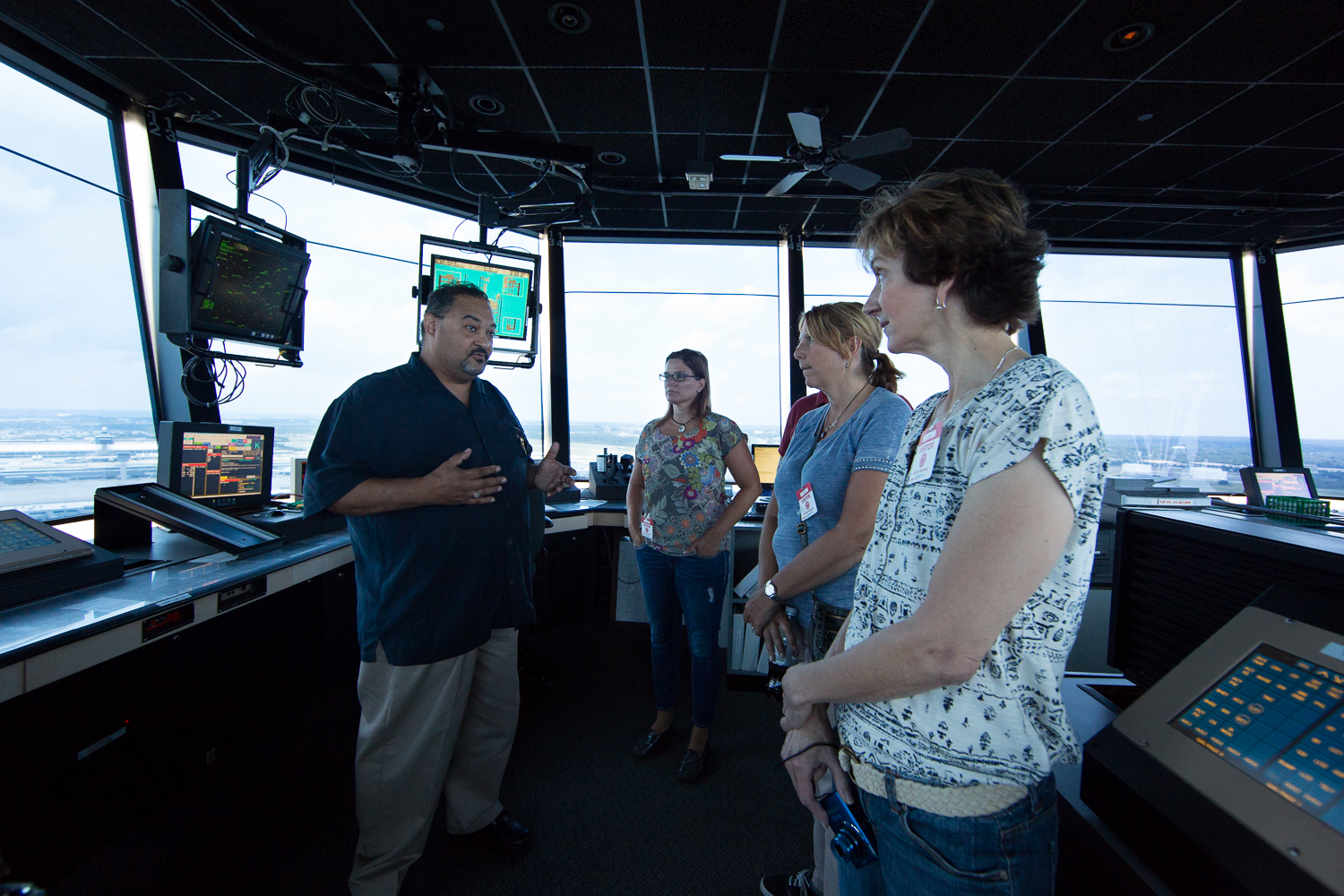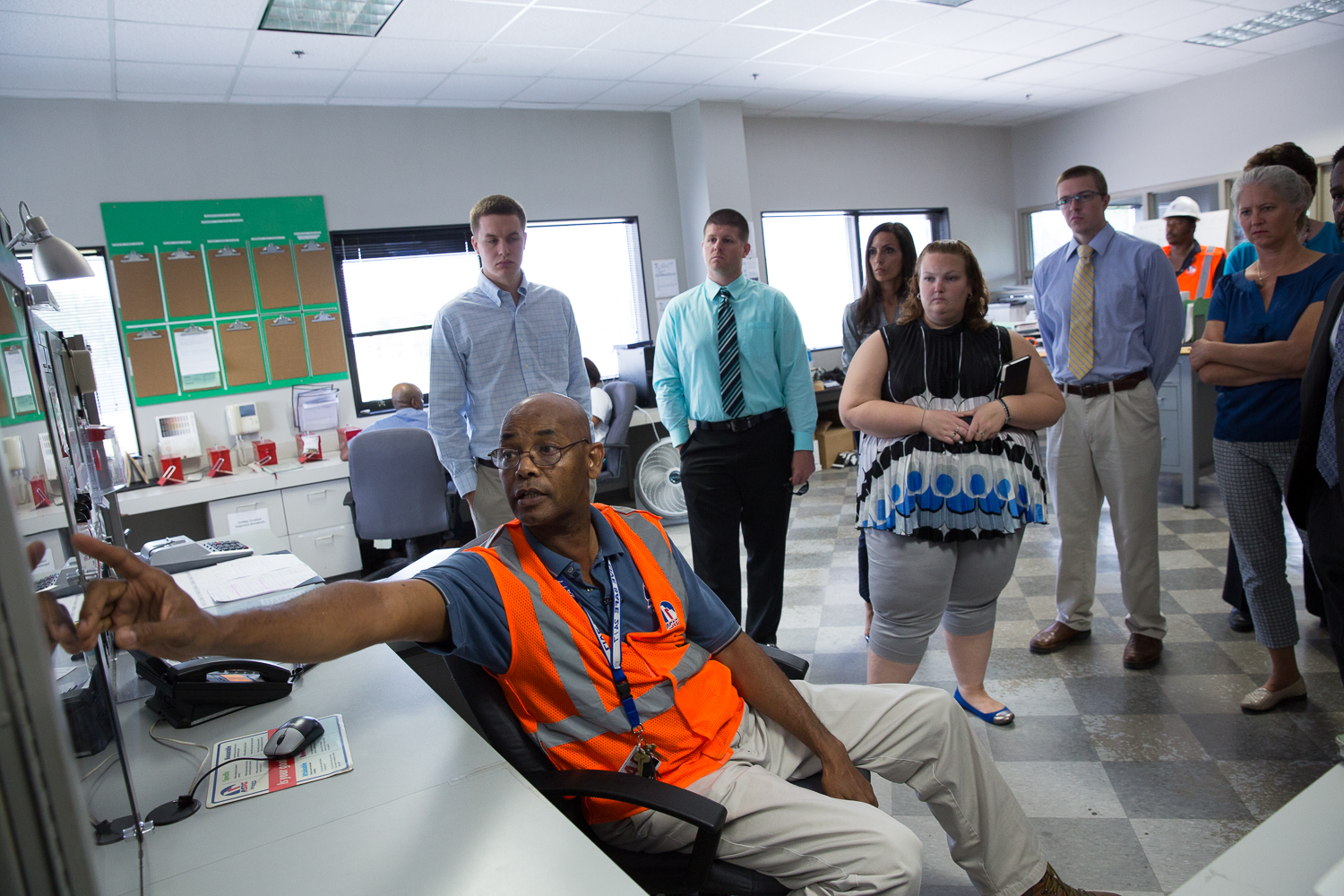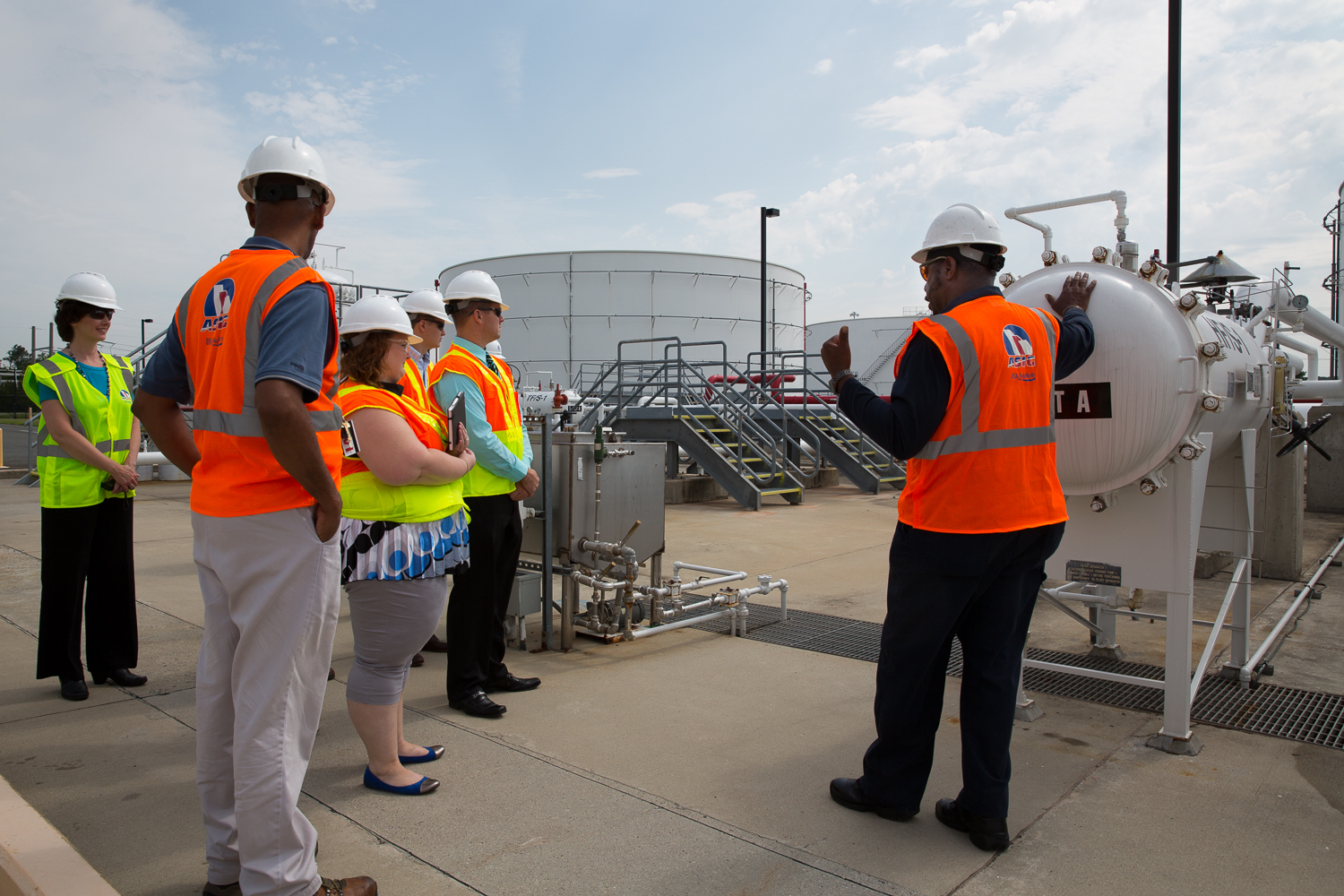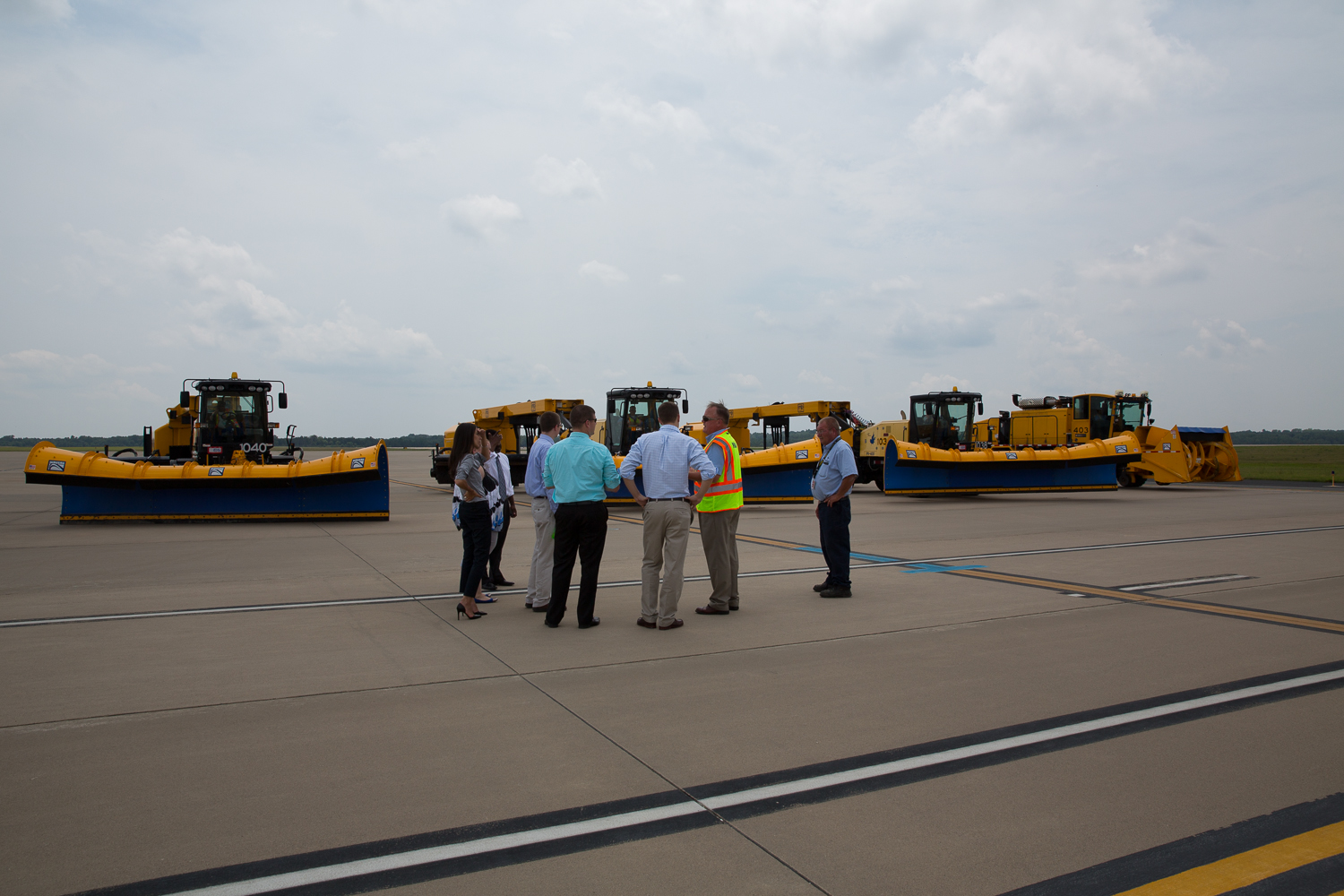As teachers try to prepare students for the working world, a high school classroom can be rather insular, admits Timi Conrath, a math teacher at Briar Woods High School in Ashburn, Va.
“You can get such a narrow focus being a teacher,” she said. “You get tunnel vision—focusing on things like curriculum.”
What jobs will be available to her students once they graduate, and what skills will they need to be successful in those careers?
To answer those questions, Ms. Conrath and 18 other public school teachers received a rare behind-the-scenes look at the Dulles International Airport—a location often equated to a small city—where they saw how airport trains are operated, toured an air-traffic control tower and found out what it takes to oversee a growing airport that accommodates more than 20 million passengers per year.
“Today has really opened my eyes,” Ms. Conrath said. “There are so many opportunities for these kids. This lets us see why we’re educating them.”
The group trip to Dulles kicked off this year’s Teachers in Industry Project, hosted by the George Washington University (GW TIP). During the three-week summer program, now in its sixth year, middle and high school teachers from Loudoun County Public Schools and Prince William County Public Schools participate in various externships at regional businesses related to science, technology, engineering and math (STEM).
The program’s goal is for teachers to discover the knowledge and skills their students will ultimately employ when they enter the workforce. The teachers also have the opportunity forge relationships with industry leaders.
The project is co-directed by Janet Schiavone, an adjunct professor in the Graduate School of Education and Human Development, and Paula Harper, executive director of program development and management at GW’s Virginia Science and Technology Campus. Teachers interested in the program undergo a competitive application process, and chosen candidates are then organized into smaller teams. This year, after a trip to Dulles Airport as an entire group, the teams participated in various four-day externships with industry partners.
This summer’s externship sites included Loudoun County Farms, REHAU, Loudoun County Government, AOL, Telos, Verizon, Inova Loudoun Hospital, Dulles Airport and Neustar.
The Loudoun County Farms externship included visits to Fabbioli Cellars, Great Country Farms and Georges Mill Farm. Teachers saw firsthand how to manage a vineyard as well as the science of winemaking and hops cultivation, agro-tourism and cheese production. They also learned about agricultural economic development from the Loudoun County Department of Economic Development.
Teachers who visited Verizon learned the latest in wireless and mobile technology, and can now explain how the Cloud functions. At the Loudoun County Government Center, teachers met with employees ranging from the county administrator to the county arborist to get a better sense of what it takes to keep Loudoun County running smoothly.
The Dulles externship group returned to the airport following the first-day trip, where they received an in-depth airport tour—which included the airport’s fuel farm where they saw chemistry in action, the side of a runway to discuss the physics of flying and a trip to the main toll plaza of the Dulles Toll Road where they learned the role statistics play in revenue projections.
“GW TIP gives the teachers a frame of reference beyond their classroom,” Dr. Schiavone said. “I also think the project builds a community of teachers who have similar goals in making learning relevant to the students and fostering an interest in STEM. The teachers tend to stay in touch with each other and gain contacts outside their building.”
But the program is beneficial to more than just teachers. Participating in the Teachers in Industry program also gives partner companies the opportunity to support educators and influence K-12 curriculum in order to produce a more skilled workforce, said Ms. Harper.
For teachers, the benefits of the externships are two-fold: They not only help them identify skills their students will need, but they also provide them with real examples to take back to the classroom.
“We’ve got to do whatever it takes to excite students to learn,” Dennis Hazell, director of customer service at the Metropolitan Washington Airports Authority, said. “I challenge you to look in your own backyard and see how you can do that.”
Briar Woods High School math teacher Susan Fitzpatrick was more than up for the challenge. Her school is only a 15-minute drive from the airport, and she is always looking for new ways to relate her lessons to examples her students will understand. The class that she is most passionate about is a lower-level algebra functions and data analysis course.
“It’s basically algebra 1.5 for kids who did not master algebra 1 from the book. So I have to frame the instruction differently,” she said. “These kids do not learn with black-and-white text books. That’s not how they connect or remember. But if I have a real-world example or something hands on, then they learn.”
Laura Ratliff, a physics teacher at Heritage High School in Leesburg, Va., was a returnee to the Teachers in Industry Project. On the first day of school last fall, using what she saw from her externship at Dulles Airport last summer, Dr. Ratliff constructed a model of the airport’s fuel tank farm with a baking pan and beakers of water. Her students were challenged to calculate how high the pan would have to be to hold all of the water (fuel) in the event of a catastrophic leak.
“These types of examples are always more genuine and authentic,” Dr. Ratliff said. “And also, companies have ideas of what needs to be changed in education. It starts a two-way conversation.”


